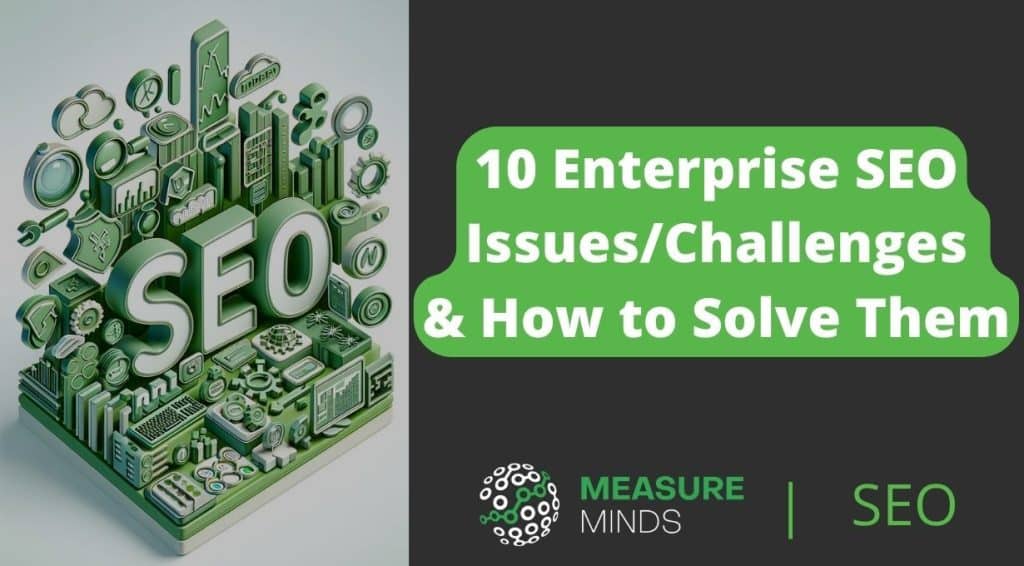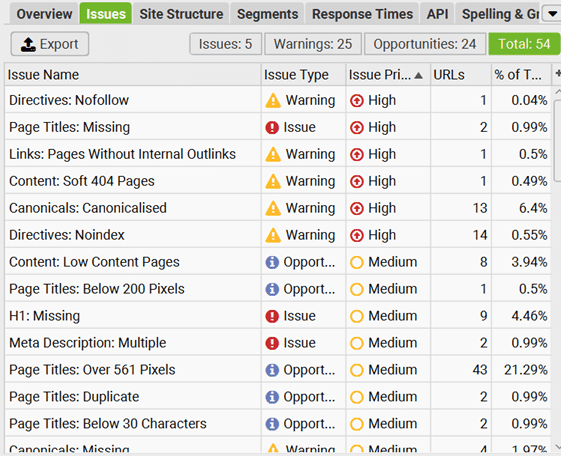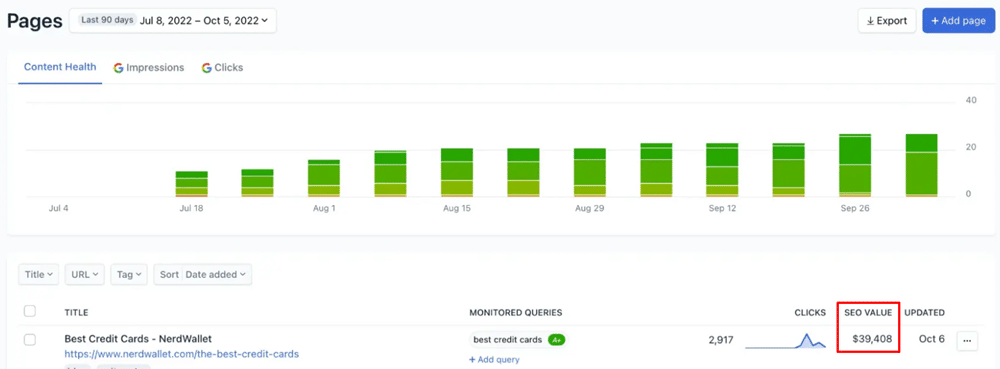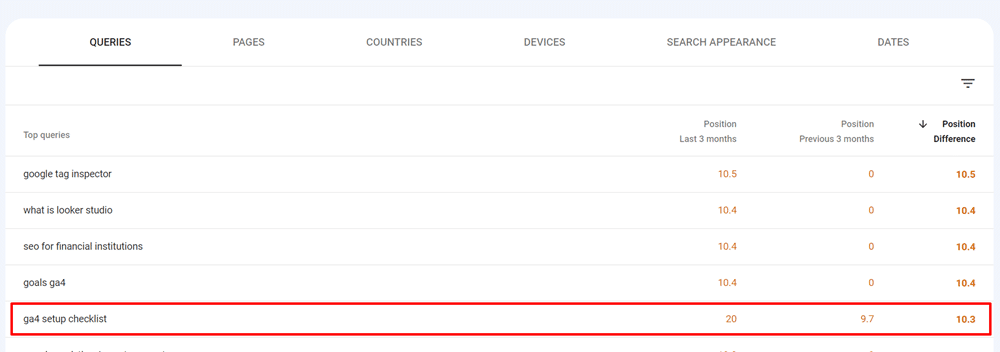
10 Enterprise SEO Issues/Challenges & How to Solve Them
I’ve gathered ten insightful responses from seasoned SEO Consultants and Founders regarding enterprises and the specific SEO challenges they face. They share their experiences, from addressing broken internal links to optimising mobile experiences. Dive into their expert advice to better understand and overcome these enterprise SEO issues and challenges.
- Addressing broken internal links
- Avoiding duplicate content
- Prioritisation of technical SEO implementation
- Securing team buy-in for SEO
- Updating outdated content
- Ensuring page crawling and indexing
- Improving page indexation efficiency
- Overcoming internal roadblocks in SEO using SOPs
- Optimising mobile experiences
- Consolidating domains
Addressing broken internal links
One of the things to watch out for on enterprise websites is broken internal links. Websites that have thousands of pages often undergo restructuring at some point. This is when disaster can occur.
When teams recategorise the website without any SEO guidance, page URLs can change and, as a result, internal links can become 301 redirects at best or broken “404” pages at worst. With any website, it’s important that redirections are in place following any URL change to ensure there’s no loss of link equity and for the user experience to not be tarnished by links leading to pages that no longer exist.
Ideally, all internal links should directly link to the destination page without a chain. That is why a crawl of the website and a planned migration of the before and after URLs is integral to any website development where URLs or structure may be impacted so that a page’s internal links can be updated with the latest and correct URLs, either manually, via plugin or through scripts.
Steph Andrusjak, Freelance SEO Consultant, SEO Steph
How I manage 301 redirects for enterprises
Steph makes a great point. I’ve managed a few enterprise web migrations and they can get particularly messy due to the amount of pages. Unfortunately, there isn’t a button you can press to do everything for you. My tip: Use Google Sheets and a good redirection plugin that allows for bulk imports. I recommend Yoast Premium, but there are other free options out there.
Use Google Sheet formulas to replace parts of URLs that need changing. Here’s a very simple example of that in which I’m trying to add “/blog” to the URL of all my enterprise SEO blogs.

Then upload the concatenated list into whichever bulk redirect tool you’re using.
Broken outbound links are important too
Check for broken outbound links as these can cause serious issues. Broken 404 outbound links are bad for user experience. But I’ve seen very professional enterprises linking out to what was once a legitimate site, but has been bought and now is, let’s say on the naughty side.
You can use SEO tools like ScreamingFrog to identify all the outbound links on your site. Domains that have been bought often redirect to another website, so check for 301 redirects. See where they are redirecting to. Are you happy with linking to this site? If not, then remove the link.

Other than that, it is a matter of just going through all your external backlinks and either eyeballing them or testing them to see whether to remove them or not.
Avoiding duplicate content
One enterprise SEO issue that I’ve faced, which is common among enterprises—especially franchises—is a massive amount of duplicate content. Enterprises with sites across the U.S. or the globe can have hundreds or thousands of locations with their own internal page on the website.
The typical response I’ve seen is to have a templated approach; for example, all of their location pages have the same format, style, and copy with little to no variation. Google wants to serve distinct, unique, helpful content, not duplicate content, so this templated approach hinders organic growth.
Enterprises, as painful as it can be, must make every page unique. Every location website page must be as distinct as possible. To do this, consider having the following info specific for each location: photos, manager bios, employee profiles, awards and achievements, sponsorships, testimonials, discounts, and anything else you can add to make each location page different.
Dan Ansaldo, SEO Consultant, Kansas City SEO Consultant
Dan touches on a big pain point for enterprises that I see ALL THE TIME. Because websites are so big and so much content is being produced, templates are used and have no focus. Utilise variables in your templates and a variety of templates. So if you have to publish masses of job descriptions because you are a recruitment firm, for example, then at least the web pages have some variance.
There was some research done to show that a ratio of 50/50 original content to similar content is the minimum needed for a piece of content to be deemed unique. You should aim for this.
Keyword cannibalisation
Keyword cannibalisation can become a serious problem for enterprises because of all the duplicate content. Again you can assist with this by using variables and multiple templates.
But you should always have a unique keyword focus for each page. Variations of that keyword should be accounted for too. Some keywords are different but similar enough that the same pages rank for them. To avoid creating multiple pieces of content for similar keywords do some keyword research and see if the same pages are ranking for multiple keywords.
I’d also recommend performing a full content audit, listing the target keywords for their respective pages and then identifying where cannibalisation might be occurring. You can also use SEO tools like Semrush’s ‘Cannibalization Report’.
Prioritisation of technical SEO implementation
In implementing technical SEO tasks within an enterprise, the challenge often lies in the scale of the website, the intricacy of the tech stack, and the number of stakeholders involved. Prioritization of tasks is crucial, distinguishing them into tiers based on their impact and resource requirements.
Effective communication is the backbone of this process, requiring tailored messaging for different stakeholders: technical specifics for developers and business implications for executives.
Educating and training staff on the importance of SEO and essential SEO skills can foster collaborative efforts across departments. Finally, it’s beneficial to nurture a culture of testing, such as A/B testing, to validate the impact of SEO measures.
Joe Hall, SEO Consultant, Hall Analysis
This applies to all organisations, not just enterprises. And for all operations, not just SEO.
Traffic light tests
One thing everyone gets is a green, amber, red OR low, medium, critical. When it comes to SEO, tools like ScreamingFrog quickly build a report of issues on a site and advice on how you should prioritise them.

This however is a guideline. It is up to you to then, as Joe mentioned, prioritise these based on the amount of time it’s going to take and the amount of impact it’s going to have.
Create dashboards to measure SEO
To keep stakeholders happy, show them the impact of your work and ultimately keep them paying, you should set up proper reporting designed around their KPIs. There are lots of great SEO reporting tools out there, but as a free option that can draw data from multiple sources, Looker Studio is one of the best. We have a great guide on Looker Studio for you to find out more.
Securing team buy-in for SEO
The biggest enterprise SEO challenge is getting buy-in from other teams. In large organizations, SEO has many moving parts across teams. Despite robust data, it’s hard to get stakeholder commitment to ambiguous, long-term roadmaps.
I’ve learned three key lessons in solving this challenge:
- Frame SEO as enabling other teams to hit their goals. Show how it supercharges their KPIs.
- Quantify everything with numeric targets and budget scenarios. This shows an understanding of constraints.
- Build genuine relationships. Help stakeholders see how SEO benefits them specifically.
With the proper framing, quantified recommendations, and interpersonal skills, SEOs can overcome buy-in challenges to unlock resources and support.
Paul Andre De Vera, SEO Consultant, PaulAndre.com
Use data, reporting and competitive intelligence
I find the best way to secure buy-in is by using data. Because data is truth! One great way of using data to support the need for investment in SEO is by showing how much an enterprise would save on paid advertising.
Clearscope’s inventory report is a great tool for this. You can list a bunch of URLs and all the keywords that you want to monitor. Clearscope will then tell you how much money you have saved on PPC for the same amount of organic clicks that you have received.
Don’t alienate the paid advertising team, as PPC and SEO often work hand-in-hand. That’s where understanding your audience comes into play. But paid advertising will always be a big drain on advertising budget, whereas SEO is an investment.

Updating outdated content
One enterprise SEO issue I consistently deal with is how to address outdated content. Almost all content becomes outdated at some point, even if it is years down the road.
As an SEO, you don’t always have the expertise to update the information within that content or even the time to do it. Ideally, you can create a team of people within the company, with buy-in from upper management, to get those pieces updated over time.
Dustin Montgomery, SEO Consultant, Dustin Montgomery SEO Consulting
How to find outdated content
Conduct a content audit and refresh the content audit at a rate that is suitable for you. Twice yearly is ideal.
Identify keywords where you’re dropping in rankings. A drop in rank may indicate that you’re content is no longer answering the user’s query, so you need to refresh it. To do this, use Google Search Console to compare a certain time period to the previous period or year.

Then sort by position difference (descending). Ignore where the previous 3 months say 0. That just means you weren’t ranking for that keyword previously. But do take notice where there is a number present in all three columns.

As you can see we’ve dropped from position 9.7 (first page) to 20 (second/third page) which can make a huge difference to the amount of clicks you get. In this case, I want to find out the URL on our site targeting ‘GA4 setup checklist’ and consider updating it.
There are lots of other great SEO tools that track keywords and identify drops in rankings for you. This way you can keep tabs on all your target keywords and URLs consistently.
Note: Some keywords are seasonal, meaning they are more popular at certain times of the year. In these cases, you need to compare to the previous year, not the previous month or period.
How to refresh old content
This involves identifying what is ranking well, comparing that content to your own to see what’s missing and finally making the changes. There are lots of components that could be contributing to the success of a piece of content. Here are some key factors to look at:
- Is it factually correct?
- Does it answer the user’s question simply?
- Does the title and meta reflect the keyword you’re targeting?
- Number of backlinks.
- Number of internal links pointing to the page.
- Do you use the keyword and semantic keywords an appropriate amount of times on the page?
There are plenty of tools out there that can help you refresh your content. Scalenut is one that I recommend as you can use the free trial to refresh a few pieces every now and then with a different email (keep that one quiet!).
Scalenut will identify and assist you with all the key factors I mentioned earlier and more. Apart from backlinks to your page. You’ll need to launch your own campaign to build links or purchase link-building services from an agency like us.
Ensuring page crawling and indexing
One issue I’ve dealt with a lot is making sure pages get crawled and indexed by Google. With small sites, it’s easy to build a site structure with enough internal links to ensure that all pages can be interlinked, but with enterprise sites, it becomes quite a challenge, especially when you have a page that is deep in one section of a site.
I always recommend creating section-specific sitemaps, with each major section being linked from the footer, as well as having breadcrumbs linking back to the main sections of the site.
Isaac Hammelburger, Founder, Search Pros
Improving page indexation efficiency
For many enterprise clients, getting pages indexed quickly and efficiently is one of the consistent challenges I see. Fundamentally, if you don’t have pages in the index, they can’t rank and send you traffic, so the need to have a solution is very important.
You can manually submit via Google Search Console, but this isn’t a scalable solution for more enterprise brands. Instead, they need to primarily consider their internal linking strategy.
If new pages are extremely important, they need to be featured on the homepage when they go live. Similarly, having dynamic links on existing pages added for newer pages can greatly speed up the indexation of new pages.
Freddie Chatt, E-Commerce SEO Consultant, Freddie Chatt
Overcoming internal roadblocks in SEO using SOPs
With enterprise-level businesses, a major challenge SEOs often face is internal roadblocks due to things like legal approval, product approval, development backlog, and general business priorities that can put the brakes on implementation.
All of this is part and parcel of big business. In my time working with enterprise clients, there are a few things that can help smooth out these bumps.
My main piece of advice to solve this is to create Standard Operating Procedures (SOPs) for each stage of the SEO process, which includes teams outside of SEO directly.
Take content production for example. You might have to run through SEO research, briefing and content creation, product team approval, legal team approval, and then development team upload. Ensure you provide each of these teams with a checklist and also make sure they understand the SEO goals of the content. This can help expedite approval and upload.
Ben Poulton, SEO Consultant and Founder, Intellar
Optimising mobile experiences
A key challenge in enterprise SEO is inconsistencies in mobile experiences across large, complex sites. With mobile-first indexing, flaws like slow loads, tricky navigation, and ineffective UI can severely impact conversions and rank.
To solve this, governance and coordination are required. I advocate for global mobile guidelines, automated testing, and cross-functional QA. Rallying around mobile KPIs brings alignment. By making mobile optimisation a unified priority across teams, enterprises can systematically fix flaws and deliver seamless mobile experiences that bolster SEO.
Taylor Scher, SEO Consultant, TaylorscherSEO
Consolidating domains
Enterprises often have multiple domains (microsites) and these can work well to produce focused material to a specific audience. However, this takes up so many company resources through management and decentralisation.
Consolidating these domains into one powerful and authoritative domain is the ideal scenario. 301 redirecting the links from the microsites to the main site will increase its authority and all of the content that’s republished on the core domain can begin to draw traffic to the core part of your business.
Furthermore, you’ll free up a lot of time for your development team and save a good chunk of money from no longer needing to manage multiple domains.
Are you an enterprise needing help with SEO?
MeasureMinds is a specialist in enterprise SEO. Boasting a team that has worked on some of the biggest brands and consistently achieved #1 positions for competitive keywords. We increase organic traffic, brand awareness and conversions. Take a look at our enterprise SEO services.
- How to Blend GA4 & UA Data Using BigQuery & Looker Studio - 12/07/2024
- How to do a Google Analytics 4 Audit & Mistakes to Avoid - 10/07/2024
- How to Backup & Visualize GA3 Data for Free - 27/06/2024








